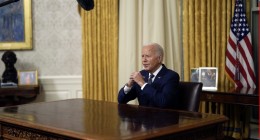Pharrell Williams made his stellar debut as a creative director this summer at Paris Fashion Week for Louis Vuitton. The collection, however, was not discussed as much as the star-studded performances after the show. As Williams marched out with the rest of the team, the media called it “a fashion show beyond just clothes”. Williams was definitely not the first — and will not be the last — designer who leans towards and is empowered by this approach. More fashion brands are putting culture and people forward — “community” is taking centre stage.

Earlier this year, Dior’s creative director, Maria Grazia Chiuri, hosted a show in Mumbai to celebrate traditional Indian artisanship and craftsmanship, casting light on the nation’s unsung prowess in the fashion world. Adopting a different approach with the same core values nonetheless, Dior brought the backroom to the front, sharing the spotlight that has been long given to just one “big-ticket designer” as
democratically as possible.
Community-led brands map out their strategies in several forms: either on visual appeal that is layered upon an existing community, or like Dior who shines light on everyone involved in the creative process. The main point is this: to shed the tradition of a heavy emphasis on one “celebrity designer”. The new imperative for these brands are to set up an “our-brand”, diversity and inclusivity as the main charms.
Ultimately, the idea is to break the obsolete assumption that fashion is an exclusive circle where everybody is on their own trip.
On The Shoulders of Giants
Pierpaolo Piccioli describes couture as an instrument to give voice the causes designers believe in more loudly and effectively. Telfar was an early pioneer who set the blueprint for others to follow. A cultural touchstone in the fashion world, Teflar relies heavily on the Black community, heightening the opportunities for young talents to thrust their names into the ring and give visibility to Black culture. The brand recruits mostly Black talents, spokespersons or models, using fashion as a medium to give back to the community.
A novelty in the industry then, it worked out a pricing model where customers inputted their desired price for their purchase as a means of making luxury more accessible. The “T” logo quickly earned cult status and was known amongst fans as the “Bushwick Birkin”. To get around resellers, Telfar also introduced a now defunct “Bag Security Program”, allowing unlimited pre-orders to lower the value of the resale market. After all, the stance of the brand has always been “Not for you — for everyone.”
Behind The Seams
A community-led brand doesn’t just mean engaging with the customers directly; it could mean or introspection for the brand identity or in some cases, a closer look at the many individual hands that bring fashion to life.
Giving credit when credit is due can very much be appreciated by fashion consumers, specifically the more connected and community-centred Gen Zs. Gen Zs are inclined to pick ethical production policies over ostentatious designs. Take Lush, for example. The beauty brand placed stickers of employees who made and packed the products on the packaging of their products, allowing consumers to place a name and face to the product in their hands and feel a deeper sense of connection to the workers behind the scenes.
Against the historical backdrop of the Gateway of India, Dior showcased their Pre-fall 2023 collection in collaboration with the Chanakya Ateliers, artisans behind the brand’s immaculate tailoring. The idea of celebrating the nation’s traditional craftsmanship finally provided craftspeople with the long-overdue recognition they deserved. There is always room to improve, but the House’s initiatives have been considerably progressive.
Atelier Jolie further cemented this culture of spotlighting less visible craftspeople. A fashion venture by Hollywood megastar Angelina Jolie with help from French House Chloé, Jolie gathers talents from across the globe, including marginalised groups like refugees, to start a creative hub. Instead of yet another Hollywood-star-turned-designer label, Atelier Jolie fully utilises the celebrity’s influences to empower vulnerable individuals to find and develop their innate talents.
The Headsails
There however remains ample reason for why the creative director often remains the main face of a fashion house. They represent the cogwheels and also the “make or break” aspect of what makes a successful house. That said, having incubator policies to facilitate newcomers are vital. Fashion East, for example, specifically supports independent creatives of whom some have make considerable global success such as J.W Anderson, Chet Lo and Grace Wales Bonner to name a few. Their success proves that investing in community platforms for young people can serves as a fertile seedbed for the betterment of fashion at large
Founded by the late Alber Elbaz, AZ Factory offers young designers like Thebe Magugu or Esther Manas a spot on their rotational designer list, known as “guest amigos”. Off-White too, replaced the creative director position with image and art director Ib Kamara, passing the creative batons to an emerging talent. Backed up by formidable names, budding designers get to roll their sleeves up without the anxiety of financial security.
The ever-growing number of fashion collaborations has also reached a fever pitch. While the model of fashion collaborations as originally intended as a means to reach new markets, brands now also collaborate to pool resources together and share patented skills or innovations. In fact, many collaborations today take place on the back of shared ethos. When the like-minded gather together and start meaningful projects, strong community ties are formed. This unfolds another community-driven approach: guest designers.
Unlike in-house designers, guests only appear once or occasionally to co-create. Moncler Genius by outerwear brand Moncler is one of the first few projects that roledl out a designer roster, inviting designers like J.W Anderson, Pierpaolo Piccioli, Simone Rocha, Matthew Williams and many more onto its team. The project draws a younger demographic of Millennials and Gen Zs among the overall Moncler customer base, eventually sloughing off the brand’s association with “just puffer ski jackets”.
Collaborations can create a pressure-cooker environment for designers to push their own boundaries. Jean-Paul Gaultier for one, has been making the most out of it. From Chitose Abe and Glenn Martens to Olivier Rousteing, the French Maison has fashion enthusiasts hooked with social media going on a frenzy every Couture season.
Alas…
The benefits to community-driven brands are apparent. Welcoming more voices to the conversation brings in fresh views and helps to democratise the industry, allowing designers more wiggle space to create products which fit their brand’s fan base.
Yet, building a community for a brand is not a slam-dunk solution. Money does make the world go round, after all. Too many cooks spoil the broth, making collaboration curation key. For example, brands in their sunset years might see a guest designer as a solution for a revival, but it could also exacerbate underlying problems. Tiffany Hsu, a fashion buying director at German e-commerce site Mytheresa shares, “If the brand is purely based on rotating designer, it might be slightly inconsistent for both buyers and clients as it is hard to establish a DNA for the brand.” It may be refreshing, but is it sustainable? As for culture-based brands, weighing between homage and tokenism is a challenge. Can and should the cultural identity of a brand be synonymous with that of the community which came before it?
These non-exhaustive concerns further evince that community-building is only effective when added upon a strong foundation, though results are never guaranteed. Street culture and skateboarding brand Supreme had its own extended run of ad-nauseam collaborations as well, its rise and fall taking place across a few years as a slow roast. Alas, a community-driven brand remains a nice-to-have instead of a must, at least for now.
This article was first published on GRAZIA Malaysia.
For more fashion reads, click here.




